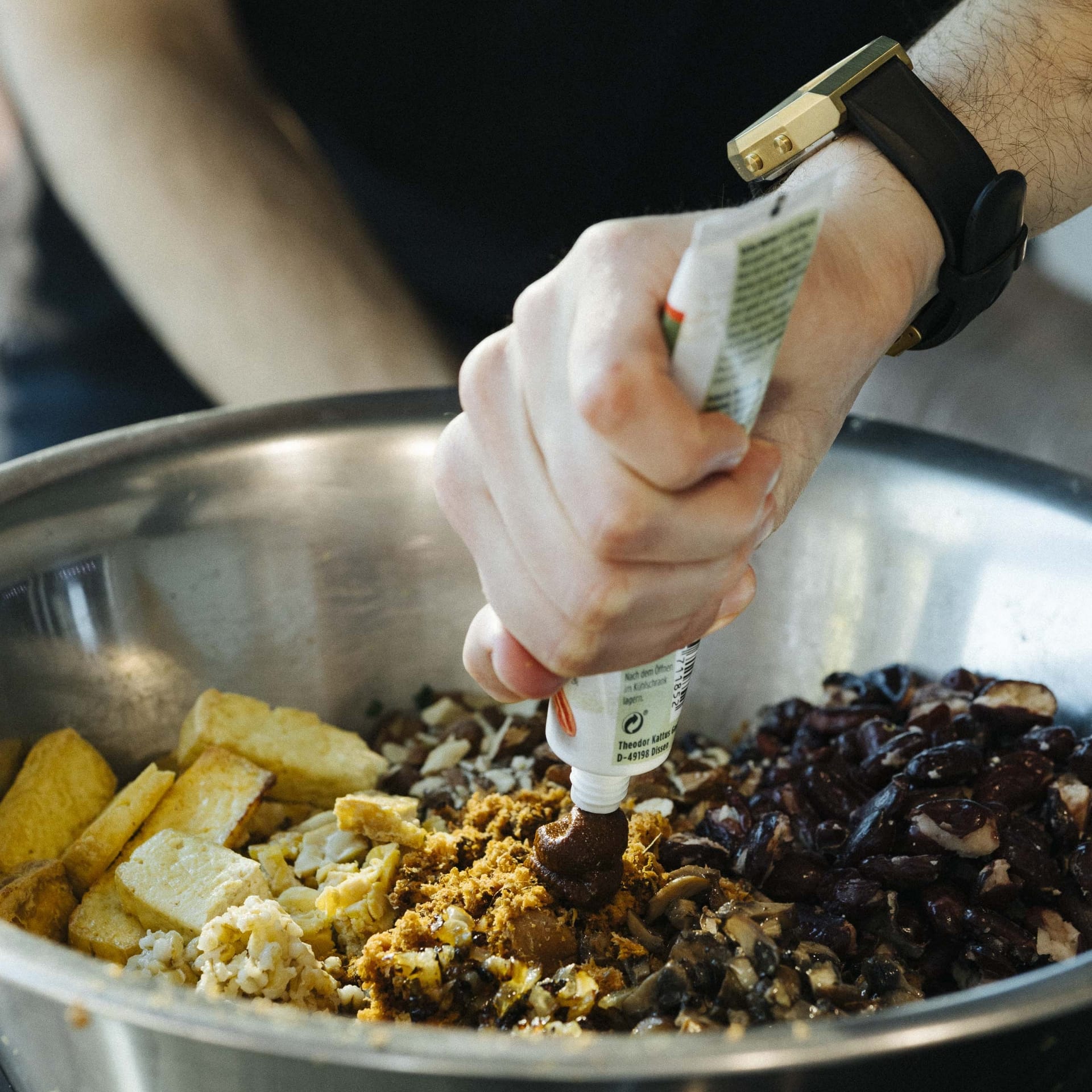Pulp Fiction!
We are used to incredible variety when it comes to food. New products constantly enrich the offer. We can give free rein to our creativity with ingredients from all over the world. But good taste and creativity on our plates is not dependent on constantly more choice. Variety and abundance also bring problems, because far too much is thrown away every day, especially in private households.

Buzzwords and campaigns such as plate instead of garbage can or Taste the Waste draw attention to the fact that a lot of food that ends up in the bin is still very good and actually belongs on our plates.
Get on up – Upcycling – Good taste from food waste
Even products that were previously considered unusable become attractive foods again through upcycling. Knärzje, for example, is a beer brand based on this principle. Stale bread is brewed into beer, making it fit for consumption again.
American chef Dan Barber has also developed recipes for his Pop Up WastED that transform food waste into pure indulgence. In doing so, he shows that we waste not only food, but also unique taste experiences when we treat food carelessly. We were particularly excited about one recipe. To do this, Barber uses an unusual ingredient in an ingenious way: He uses pomace from vegetables and fruit from smoothie production for burger patties. Now you may wonder what this “filler” is for in the burger. It is high in fiber but quite low in flavor and is usually deliberately discarded. But Barber recognized that it is a natural texturizer. While others extrude proteins at great expense to do so, Barber reaches into the garbage can.
Waste no Taste
We tried this ourselves and were thrilled. We got our Smoothie Pulp from a local manufacturer who would have gladly given us a few more pounds. The mixture is never the same. So we couldn’t exactly follow the original recipe, which uses carrot, beet and celery pomace, but it’s much more important to follow the basic idea. Therefore, our burger also contains some ginger and apple, but this does not stand out negatively.
The mixture consists of mushrooms, tofu, tempeh, nuts, kidney beans, panko, parmesan cheese, pearl barley, egg, butter, mayonnaise, garlic, onions, harissa, miso, Worcestershire sauce and salt, in addition to the marc, which is used as the main ingredient. Quite a complex mixture, but one that works very well as a patty. If a meat-like look is important to you, make sure you have enough beet or add juice. For us, however, this was just not the most important aspect (no imitation of meat!).
We were thrilled with the result. A really good burger! Thinking differently about ingredients and food waste opens up whole new possibilities. It clearly shows that not only endless variety, but also restriction provides for creativity boosts. Necessity is the mother of invention – even if it is self-imposed. This has been very evident in Nordic cuisine for years when it comes to food. The restriction to ingredients from the Northern Hemisphere led to a reorientation of high cuisine. Classic luxury products are losing importance, and vegetables and ancient techniques such as fermentation are now central elements of creative top cuisine. Perhaps everyday cooking can also change creatively and sustainably? You don’t always have to draw from the full, sometimes it’s enough to draw from full barrels.









